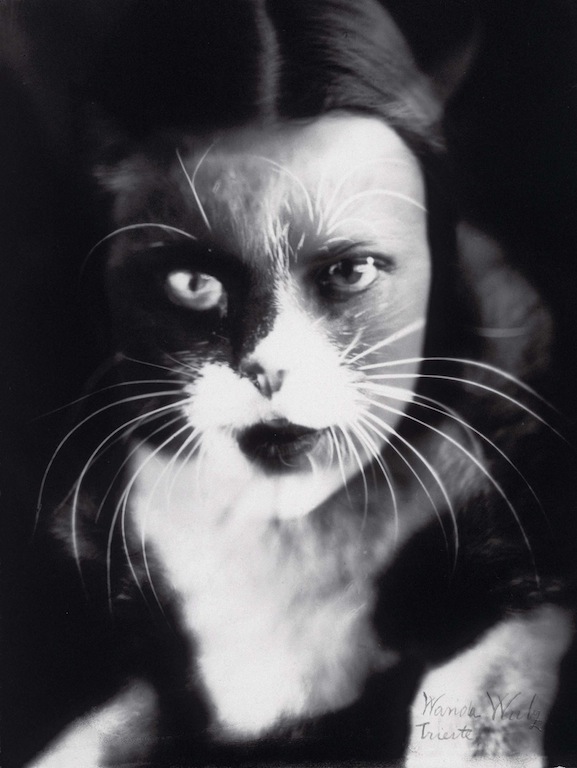
Io + gatto (Cat + I) by Wanda Wulz, 1932. Gelatin silver print
Some significant older photographs barely register on the Internet. Others, such as Cat + I by Wanda Wulz, are everywhere. It’s doubtful that many people, other than those with a special interest in photographic modernity, would have known the picture, made in 1932, when books were still the main means by which archival photographs were disseminated. Now the image is catnip on Tumblr and Pinterest, and pops up on BuzzFeed as one of “10 trippy photos edited before Photoshop.”
That shift of context might deflect the way it’s perceived, rendering Wulz’s self-portrait merely fluffy or cute, a lolcattish wish-fulfillment fantasy in which the cat fancier’s emotional identification with the beloved pet and its admired attributes achieves perfect consummation. In 1928, when her father died, Wulz (1903-84) and her sister Marion took over the family’s photographic studio in Trieste in Italy. Around this time, she began a period of experimentation with light, contrast, exposure, and as seen here, the superimposition of negatives. As the photography curator Matthew S. Witkovsky suggests, her composite image represents the rhetorical merging of a modern New Woman’s personal and professional identities. Playing provocatively with trite conventional depictions of femininity, Wulz the cat-woman is both “diminutive feline” and “rapacious tigress.”
Her confidence, determination, sensuality and poise shine out of the portrait she chose as a source (the picture of the family cat, which also survives, has less to tell). Viewing the original print confirms how brilliantly Wulz has finessed the photographic species-blur: the fur collar that blends into the cat’s pelt; the precision with which the white whisker pads define and accentuate her dark lips; and the near alignment of the cat’s eye with her own, twin pools of light animated by a filmy flicker. The image has a molten luminosity, as though Wulz has been captured in mid-transformation from human to feline alter ego, like a feral dreamer returning to the darkness.
The woman who is also disturbingly half cat is an enduring myth in popular culture, from Jacques Tourneur’s film Cat People (1942) to Paul Schrader’s more explicit semi-remake in 1982, where, after an initial show of reluctance, Nastassia Kinski’s character unleashes her inner black panther. Unsurprisingly, for an image purring with this much life force, Wulz’s self-portrait inspires photo-tributes at Deviant Art and other websites, usually following the formula of one human eye and one feline eye—ocular takeover can be unsettling. The “fantasy art” style of these montages only serves to highlight Wulz’s certainty of touch in devising an avatar so convincing its hidden claws can still leave a mark on the viewer’s imagination.See all Exposure columns

